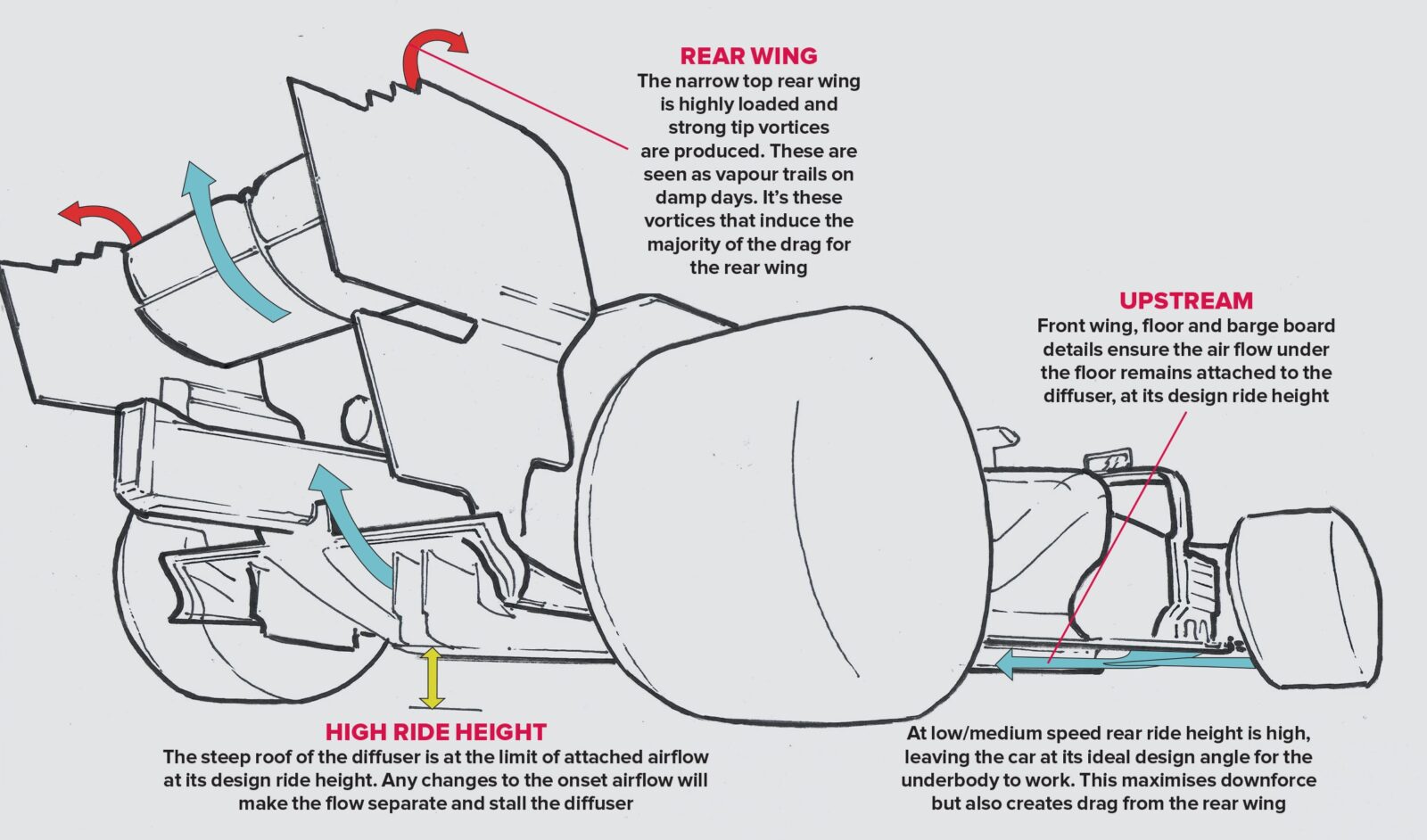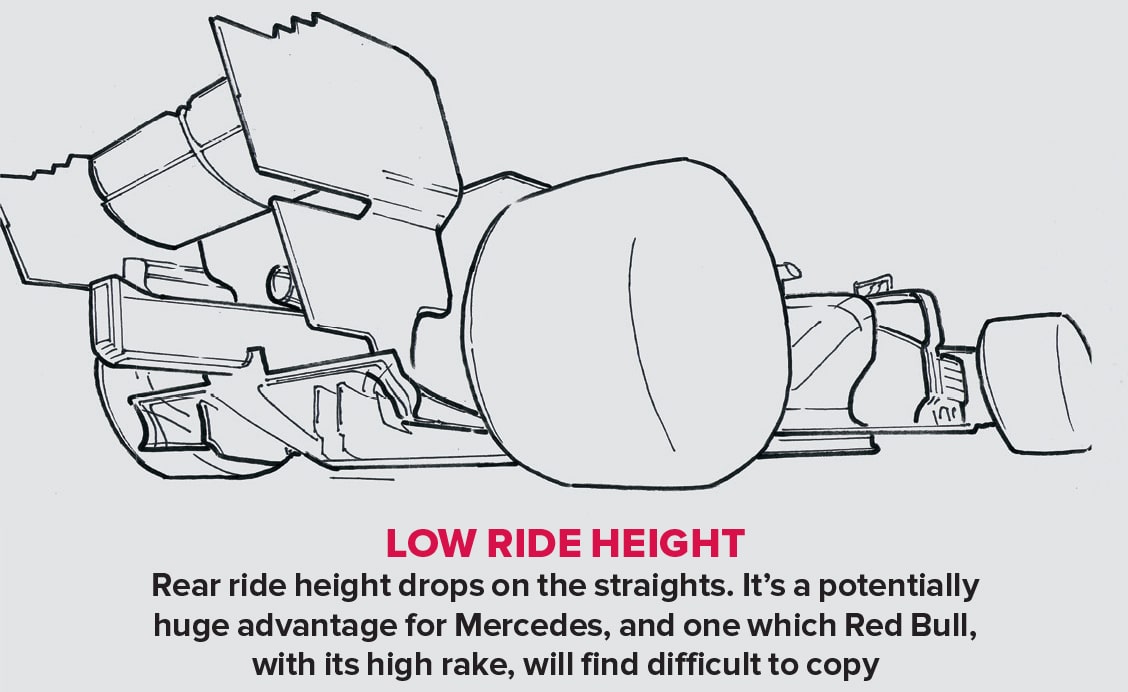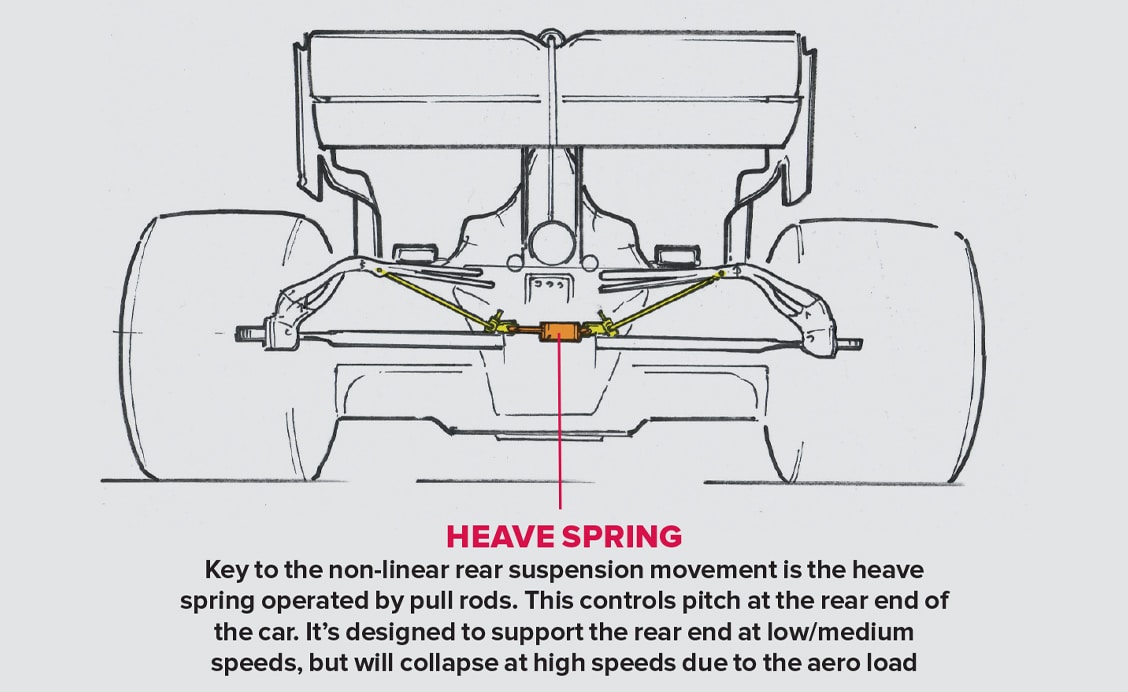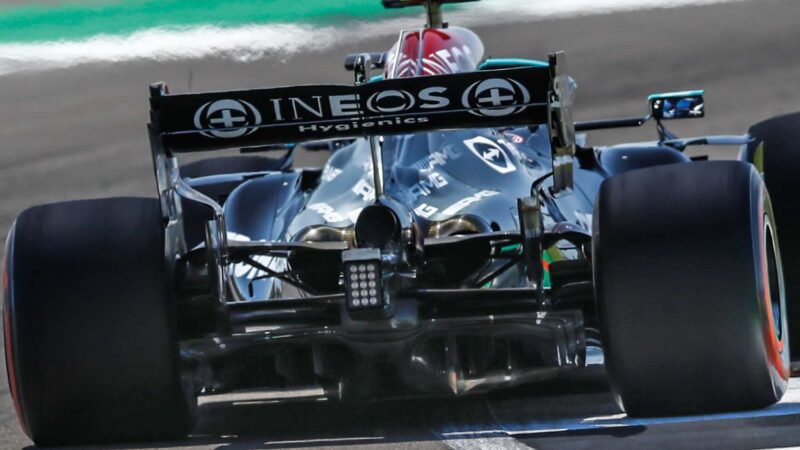Mercedes stalls for improved times in F1
Floor modifications made to the Mercedes may be utilising an aerodynamic phenomenon to boost straight-line speed

Footage from a rearward-facing facing camera on the Mercedes at Istanbul revealed just how far the rear of the car was sinking once past a certain speed. This was the first visual confirmation of how the car uses diffuser stall to enhance its straight-line speed.
All Formula 1 cars do this and have done for over a decade. But since its Silverstone update, the Mercedes has been able to do it in quite an extreme way, with the assistance of its suspension.
Downforce inevitably produces drag. The underfloor creates much more efficient downforce than the wings in that it induces only around one-quarter of the drag for a given amount of downforce. But shedding what drag it does produce will give a very useful boost in speed on the straight, where the downforce isn’t needed.
“The aero upgrade appears to enhance the diffuser stall feature”
The diffuser – which in F1, by regulation, is quite restricted in size and ramp angle – accelerates the airflow through the underfloor, reducing its pressure. The pressure difference between the ambient air and the fast-moving air passing through the underfloor effectively sucks the car to the ground. The diffuser does this through its upward sweep, increasing the volume along its length, creating a vacuum which the underfloor air rushes to fill. The faster the underfloor air, the greater the downforce (and drag). The diffuser’s angle of attack is at its greatest at low speed because the forces are not pressing it down on its suspension as hard. But as the downforce squares with speed, so any F1 car will begin to reduce its rake angle as the car is forced down on its rear suspension as speed builds. This reduces the diffuser’s angle of attack and therefore its potential effectiveness, but that is more than compensated by how the greater car speed creates greater airflow speed.
But at some point, if the diffuser is brought close enough to the ground, its expansion angle reduces enough that there is no longer enough of a pressure change for it to pull on the underfloor hard enough to keep the airflow to the diffuser attached. It stalls, and at this point the car will lose a lot of downforce – and the associated drag. The speed at which this occurs can be tuned with the rear ride height and suspension settings. So long as it occurs well beyond the speed of the fastest corner of the circuit, then a useful gain in lap time can be made from the increased end-of-straight speed.

Ideally, a mechanism in the suspension will sink the rear of the car and hold it at that stall ride height point once beyond a certain threshold of aerodynamic load being applied to it. Thereafter it will need to stay at that setting despite the reduced downforce now acting upon it until – as the speed reduces under braking and the load reduces further – it reaches a ‘release’ threshold and rises back up again, thereby restoring the downforce needed for the corner.
The rear suspension of an F1 car typically features a torsion bar spring each side and a laterally arranged third spring – or heave spring – connecting them. Through a corner, the inner torsion bar is being compressed as the outer one is extended and the heave spring isn’t actually contributing. But on the straight, the downforce is pressing upon the suspension through the heave spring, which then acts upon the torsion springs equally. The linkages of the heave spring can be arranged to allow it to go ‘over-centre’ once past a certain point, when it can be made to increase the rate at which the torsion bars compress, thereby sinking the rear of the car and achieving the diffuser stall.

It is almost certainly easier to make this work on a low-rake car such as the Mercedes than on a high-rake Red Bull, as the rear ride height is already lower when the car is static. Conversely, it can allow the Mercedes to use more rear wing than it might otherwise be able to justify, given that its greater drag can be offset by the drag reduction of the diffuser stall. This would give the car a wider range of set-up options and could be used to offset the lower total downforce the lower-rake Mercedes tends to generate than the high-rake Red Bull.

Under cornering here the left-hand torsion bar will be compressing, the right-hand one extending. The lateral heave spring connecting them will only contribute on the straight
The Mercedes Silverstone upgrade, which seems to have enabled the diffuser stall to work more effectively, was an aerodynamic one around the barge boards and leading edge of the floor, with re-angled deflectors around there. These were working the front corners of the floor harder and diverting more of the air around the sides of the car and less to the underfloor. To deliberately divert air away from the floor seems counterintuitive if the aim is to create efficient downforce, but given the extreme rear suspension sink it would be entirely logical if the aim was to induce diffuser stall more easily. It would appear that the aero upgrade was to enhance the diffuser stall feature.
There is nothing in the regulations which would make the suspension system illegal, something with which even Red Bull’s Christian Horner has agreed. Aerodynamic devices which move relative to the car are not legal but obviously there is nothing prohibiting the whole car moving on its suspension, even in a non-linear way, so long as such a suspension system is not powered.

